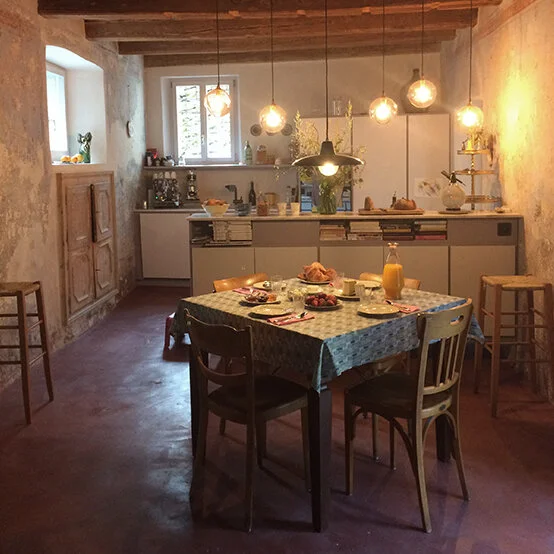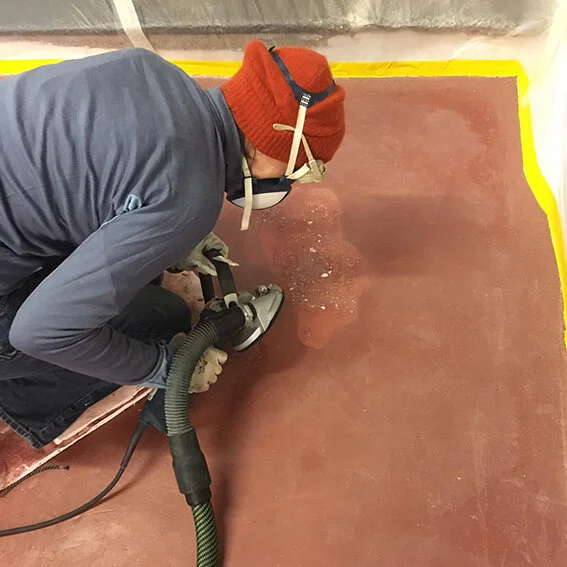Salame Cocciopesto
In the ground floor kitchen, we have laid a Terrazzo floor using the Cocciopesto method. The term Cocciopesto or Opus Signinum dates back to Roman times and refers to a lime-bound screed that gets its colour from terracotta ash shards and flour. Other additives such as marble, gravel or limestone produce a mosaic-like surface after grinding. Depending on the colouring and pattern, the appearance of such floors is reminiscent of mortadella, salami or black pudding, making them ideal for a kitchen. In the Canton of Ticino, floors made of terracotta tiles are not uncommon, so even the reference to the region is preserved. The Salame Cocciopesto floor is a continuation of Natalie Luder’s earlier artistic work like the bacon scarf “Fou Lard”.
The lime mixture was poured and compressed in two layers over the course of two days as part of a on site workshop. It was regularly compacted in the following weeks. After two years of curing, it was ready to be ground and polished and now reveals itself in shining splendour. The fat inclusions are pieces of marble from the Valle di Peccia, supplemented with some coloured river stones from the Maggia. Crushed terracotta bricks, some of which come from the demolition of the walls, suggest shades of the entire spectrum of cured meat. A pinch of iron oxide pigment provides the racier note. Bon appétit!















